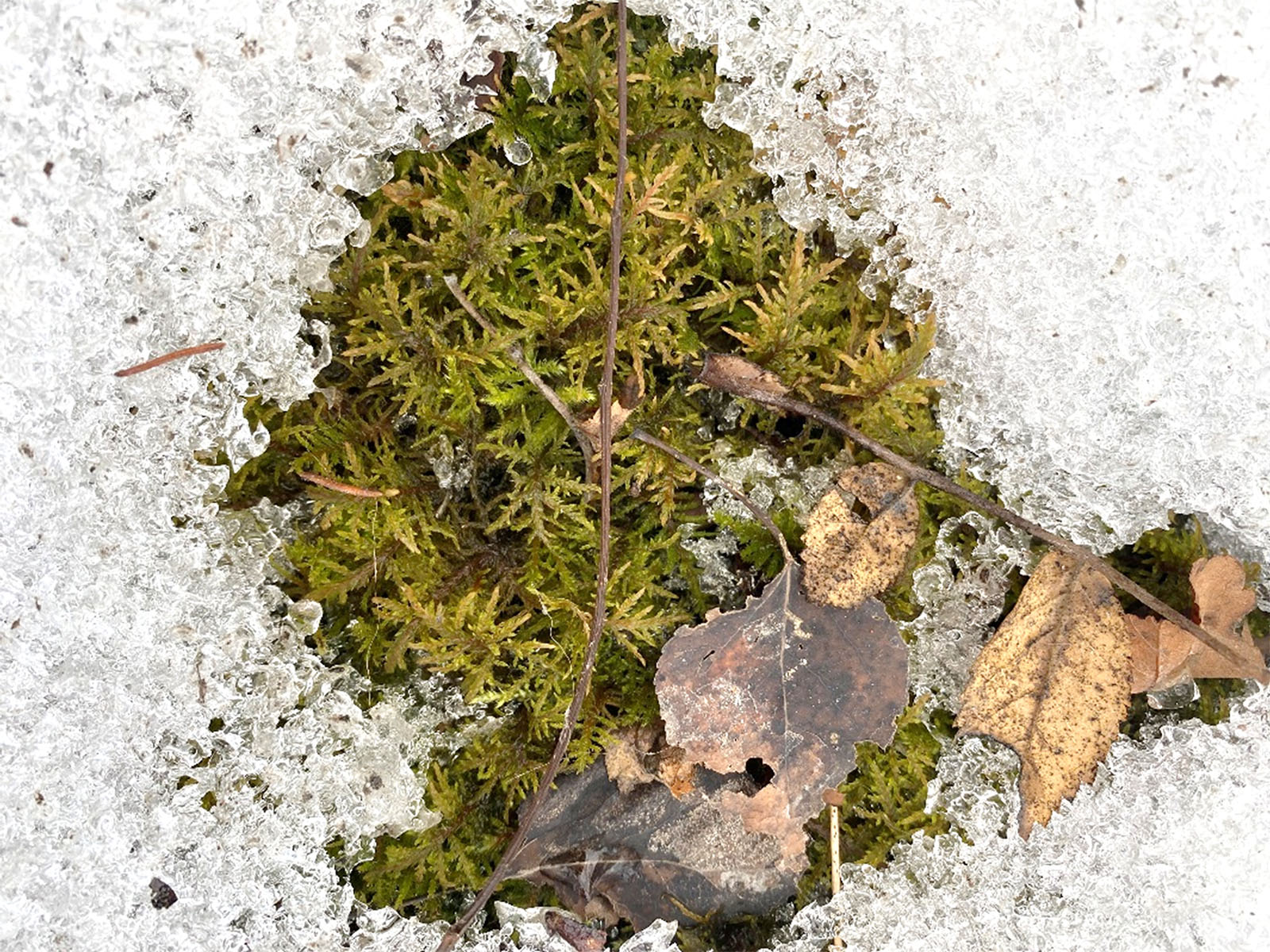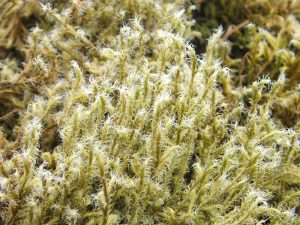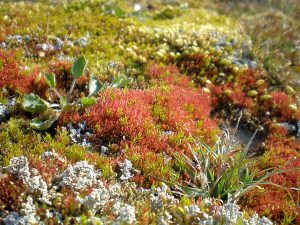The following is a guest post from Krista Williams, bryologist with the ABMI. In case you missed it, check out Krista’s recent webinar on the wonderful world of bryophytes here. Meantime, here’s another reminder of why these tiny plants are so a-moss-ing…
Mosses are peculiar little plants—barely noticeable yet incredibly intriguing. They lack many of the characteristics that define most plants. The minuscule moss leaves never fall from their stems in autumn, and they don’t bloom in the spring or send seeds adrift on the wind. In fact, most mosses have little in common with their more advanced relatives. In some ways, this can be limiting, but not when it comes to enduring Alberta’s long, cold, snowy winters. Mosses are so tolerant of unfavorable conditions that they dominate northern landscapes and thrive even in the extreme conditions of the Arctic and Antarctica.
How do mosses survive (and thrive) in harsh climates? Many ways …
- It helps to be small. Since mosses live in the few centimeters between the air and the ground, they can take advantage of this microhabitat where the air is still and the temperature is warmer.
- They produce their own version of anti-freeze (fatty acid derivatives and phenylpropanoids help increase freeze tolerance).
- They have evolved different types of sunblock. Some moss species have long white leaf tips to reflect sunlight while others produce red pigments that provide protection against damaging UV radiation. Even in winter, this type of UV protection is critical at high altitudes and near reflective surfaces such as ice and snow.
- But one of the most important factors in moss survival is their superb hibernation skills. Mosses are poikilohydric—they can dry up, shut down, and go dormant until more suitable conditions return. Bryophytes, lichens, and even some vascular plants can tolerate desiccation by halting their metabolism, and because their cell components can remain intact even when no liquid remains in the cell. But unlike other plants, bryophyte leaves are usually only one cell thick, allowing for rapid cooling and dehydration. This lowers the freezing point inside their cells and helps prevent internal crystal formation, which can damage the delicate cell walls.
- One of the more remarkable characteristics about moss resiliency is just how LONG they can remain dormant. They endure the frozen dark so comfortably that they can revive after being entombed in ice for 400 years.
- Because mosses can reproduce by cloning their cells (totipotency), all they need is one cell to survive. For bryophytes, sexual reproduction requires water and this, coupled with environmental constraints, makes sexual spore development a rarity for many species. Asexual reproduction (through specialized structures or unspecialized fragments) allows for colony survival and short-range dispersal when sexual reproduction is not possible—which, in extreme environments where water is often frozen or non-existent, is most of the time.
As winter approaches, most plants prepare for dormancy by dropping their leaves and slowing down their metabolism, and just a few degrees of frost can damage leaves beyond repair. Mosses not only retain their leaves but continue to grow during winter conditions. Some species have even been found to photosynthesize under the snow in conditions as cold as -15°C. The resiliency of mosses is truly amazing. If only winter was so easy for all of us!
To learn more about mosses and the ABMI’s bryophyte work, check out the latest webinar in the It’s Our Nature To Know Webinar Series on our YouTube Channel (direct link to Bryophytes of Alberta).
Also check out the 357 species (and counting!) of byrophytes the ABMI has monitored to date on the Biodiversity Browser.



